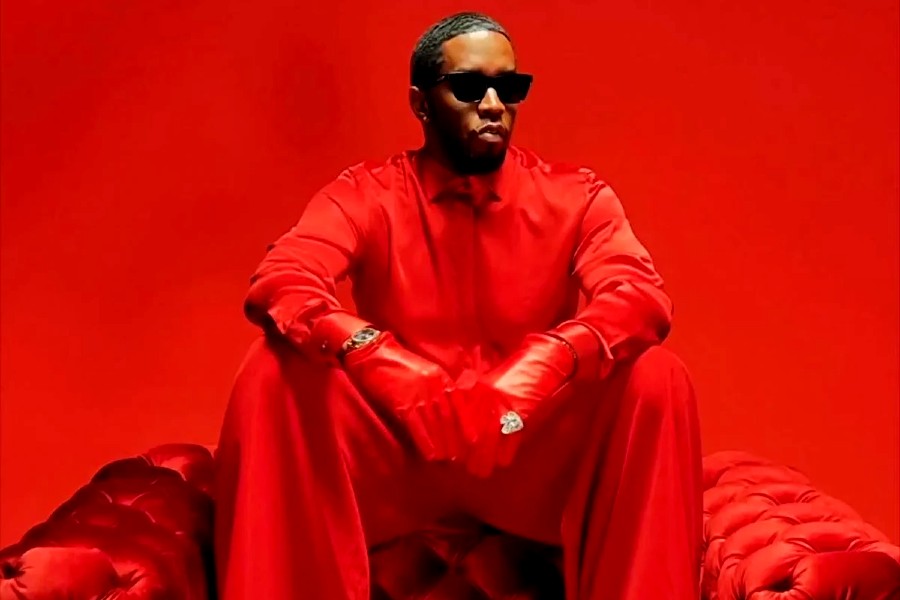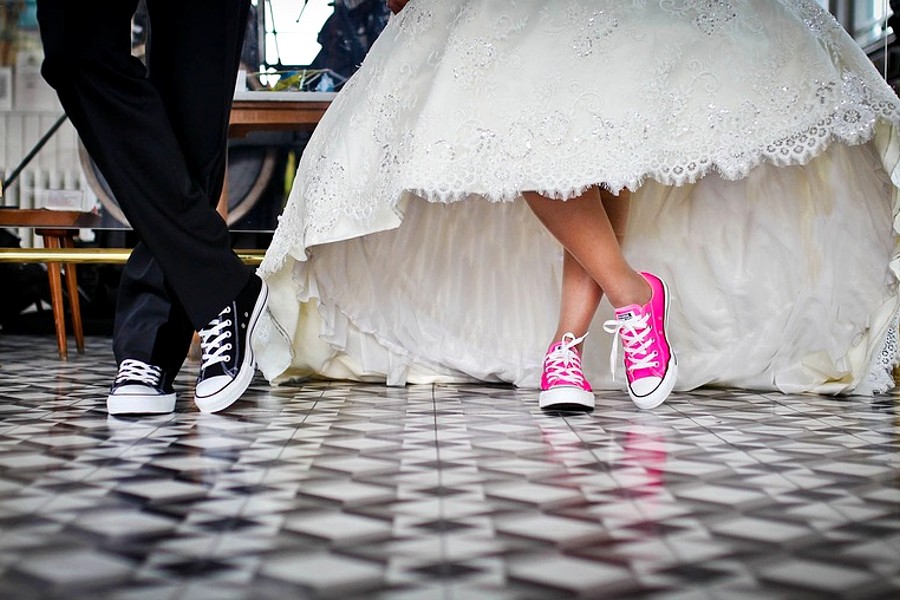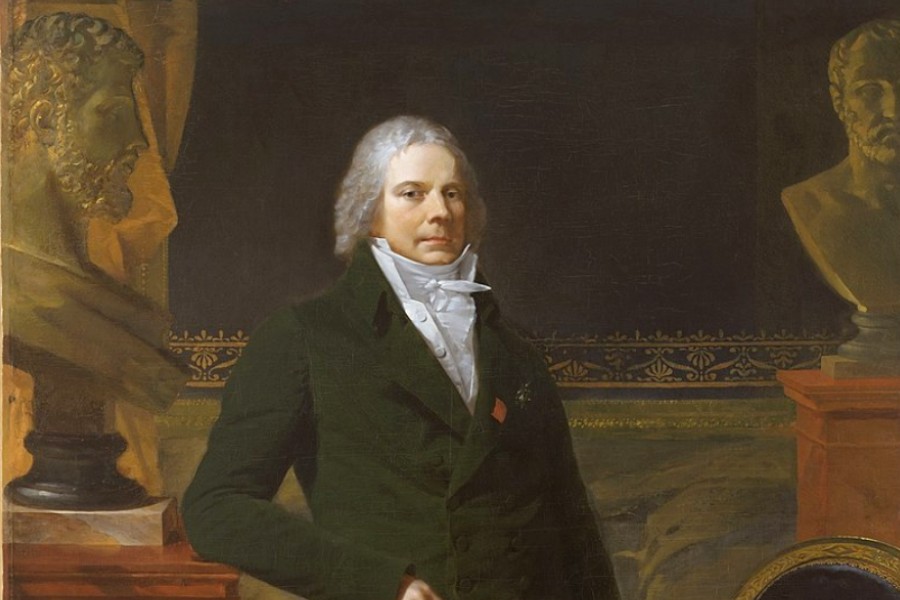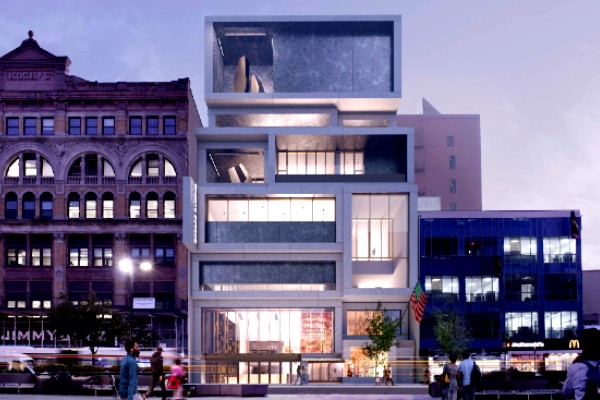 The Studio Museum in Harlem, today joined with civic leaders, trustees, artists, friends, patrons, and members of its vibrant community for Creating Space.
The Studio Museum in Harlem, today joined with civic leaders, trustees, artists, friends, patrons, and members of its vibrant community for Creating Space.
A ceremony marking the next phase in the construction of the Museum’s new home on West 125th Street. New York’s Lieutenant Governor Brian Benjamin and New York City Mayor Bill de Blasio and First Lady Chirlane McCray joined Studio Museum Director and Chief Curator Thelma Golden, Sir David Adjaye (architect of the museum’s new home, with Cooper Robertson), and artists Theaster Gates and Yaw Agyeman for the celebratory event, held on the plaza of the Adam Clayton Powell Jr. State Office Building, directly across 125th Street from the site where the new Studio Museum will rise.
Also participating in Creating Space were New York City Commissioner of Cultural Affairs Gonzalo Casals, Studio Museum Board Chair Raymond J. McGuire, and Studio Museum Vice-Chair Carol Sutton Lewis.
In honor of the Studio Museum’s storied history and its intergenerational network of artists, Theaster Gates and Yaw Agyeman (a collaborator with Gates in the collective The Black Monks) gave a spoken-and-sung-word performance naming artists represented in the permanent collection. Leading arts professionals associated with the Studio Museum who were present for the ceremony included Naomi Beckwith from the Guggenheim, Patrick Charpenel from El Museo del Barrio, Kate Fowle from MoMA PS1, Anna Glass from Dance Theater of Harlem, Max Hollein from the Metropolitan Museum of Art, Uzodinma Iweala from The Africa Center, Sandra Jackson-Dumont from the Lucas Museum, Glenn Lowry from MoMA, Jonelle Procope from the Apollo Theatre, and Adam D. Weinberg from the Whitney Museum.
Site preparation is complete and foundation work has begun for the Studio Museum’s new purpose-built home, which replaces a century-old commercial building on the site that had been adapted for the Museum in the early 1980s by the late, renowned architect J. Max Bond Jr. Thelma Golden announced that the Studio Museum has commissioned Theaster Gates to create a site-specific artwork to be installed in the lobby of the new building using materials he extracted from the Museum’s former home, keeping alive the memories of decades of creative activity in that place and maintaining a trace of the presence of J. Max Bond Jr.
Thelma Golden said, “We have embarked on the adventure of creating a new, purpose-built museum, envisioned by one of the most inventive and visionary architects of our time. The building we celebrate today will be a physical manifestation of our mission, supporting and enabling everything we do for artists of African descent, for our beloved community of Harlem, for New York City, and for our visitors from around the world.”
Raymond J. McGuire said, “We are a community of builders, all committed to creating a magnificent new space for the Studio Museum, and a state-of-the-art space where artists can create. This new building is going to be the global epicenter where today’s public, and tomorrow’s, can encounter great artists of African descent of every generation. It will be one of the crown jewels in New York City’s cultural mosaic and give our rapidly evolving neighborhood of Harlem the profoundly authentic cultural center it must have.”
Carol Sutton Lewis said, “Like many of us who grew up in Harlem, I roamed the galleries of the Studio Museum from a young age, exploring and absorbing the incredible collection, always in discussion with family and friends. One of the lessons I learned is that art can foster empathy and community. Today, thanks to the trustees, patrons, and supporters of The Studio Museum in Harlem, the work of Black artists is flourishing. And thanks to our capital campaign, we are realizing our once-in-a-lifetime opportunity to carry this museum to even greater heights through expanded programs and our extraordinary new home.”
Sir David Adjaye said, “In designing a new home for a cultural institution that is so entirely unique, I wanted to make a building that not only emerges from its place but would learn and grow with it. The museum, which people passing by will soon watch rise from the ground, takes in and recalibrates Harlem’s architectural vernacular into a new space ripe for the display and cultivation of Black artistic excellence. The new home is the coming together of the museum’s trailblazing history, embodying the contextual, spiritual, political, and artistic moments of Harlem whilst also holding the infinite possibilities of its future.”
Lieutenant Governor Brian Benjamin said, “Harlem is a nexus for Black culture and arts in New York. The Studio Museum is an iconic institution that serves as an incubator of art and talent. Today, we mark a milestone for the Studio Museum, which will be a pipeline for artists of African descent and will leave its mark in New York City as an important cultural landmark for decades to come.”
Empire State Development Chief Operating Officer and Executive Deputy Commissioner Kevin Younis said, “Empire State Development is proud to support the Studio Museum in moving closer to realizing its vibrant new home in Harlem. Investing in the Studio Museum enhances our mission by creating pathways for working artists and attracting visitors to Harlem, increasing opportunities for local businesses and supporting tourism in the area.”
Mayor Bill de Blasio said, “Harlem is a beacon of Black art, culture, and creativity, drawing so many to our city for decades. By expanding the world-renowned exhibitions at Studio Museum Harlem, we can ensure this historic neighborhood continues to be a source of educational opportunities, inspiration, and support for future generations of artists, creators, and dreamers in New York City.”
First Lady Chirlane McCray said, “For more than fifty years The Studio Museum of Harlem has filled an insatiable hunger and need, telling the stories of the African diaspora, defining our identities, documenting history, and celebrating the beauty that has been hidden or scorned. I am proud that the de Blasio administration, could support this extraordinary new museum, and I am especially grateful that through the Artists-in-Residence Program, there will continue to be a pipeline of young artists of color ready to challenge us, upend our perceptions, and expand our horizons.”
A public-private partnership with the City of New York
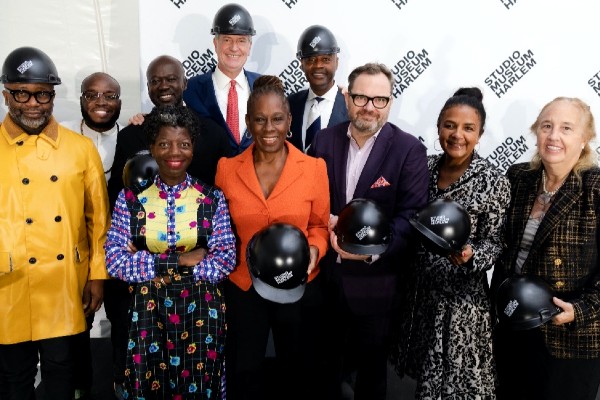 The Studio Museum’s capital campaign has raised $210 million to date for construction, endowment, and the operating fund—120 percent of the original goal—and will now extend its target to $250 million, building on the campaign’s success and momentum and ensuring the strongest possible future for the institution. The City of New York has committed more than $62 million toward the project, with support from the Office of the Mayor, the Department of Cultural Affairs, the New York City Council, and the Office of the Manhattan Borough President. Other public and private funding, including a broad national coalition of philanthropists, business leaders, and art world leaders, accounts for nearly $148 million.
The Studio Museum’s capital campaign has raised $210 million to date for construction, endowment, and the operating fund—120 percent of the original goal—and will now extend its target to $250 million, building on the campaign’s success and momentum and ensuring the strongest possible future for the institution. The City of New York has committed more than $62 million toward the project, with support from the Office of the Mayor, the Department of Cultural Affairs, the New York City Council, and the Office of the Manhattan Borough President. Other public and private funding, including a broad national coalition of philanthropists, business leaders, and art world leaders, accounts for nearly $148 million.
Undertaken as a public-private partnership with the City of New York, the new 82,000-square-foot building for The Studio Museum in Harlem is designed to express the Museum’s core values of openness and engagement as they have been lived throughout a five-decade history of innovative and impactful exhibitions and programs, while also providing exceptional new spaces to elevate the Museum’s service to artists, audiences, the uniquely vibrant Harlem community, and the world of art.
New York City elected officials added their statements of support on the occasion of the Creating Space ceremony.
New York City Cultural Affairs Commissioner Gonzalo Casals said, “The Studio Museum in Harlem shows us what can be done when a cultural institution is deeply rooted in and responsive to the community it serves, led by people with vision and intelligence and generosity. Thelma and her team, building on decades of work by advocates, activists, and community champions, have fostered generations of artists from their home on 125th Street. In their focus on supporting Black artists in particular and giving them the platform they deserve, the Studio Museum has enriched our cultural landscape and helped show us all the way toward a more inclusive, vibrant future. With the beginning of this new chapter, we’re proud to partner with and invest in The Studio Museum in Harlem so it can continue its work for decades to come.”
Manhattan Borough President Gale Brewer said, “The Studio Museum in Harlem has long been an important part of the city’s cultural sector, supporting Black artists and providing artistic opportunities for all. I’m delighted to have supported capital funding for this project and congratulate all who played a role in the planning process for the Museum’s new home.”
New York City Council Speaker Corey Johnson said, “The creation of this new cultural building will allow the Studio Museum to build upon its impressive track record of serving artists and students and will leave an indelible mark on the city’s cultural landscape. As Speaker, I am proud of the Council’s capital funding support for The Studio Museum in Harlem, and we look forward to seeing it come to fruition.”
City Council Member Jimmy Van Bramer, Chair of the Cultural Affairs and Libraries Committee, said, “The Studio Museum in Harlem is an integral part of New York City’s cultural community, and I am honored to help support their new space and the expansion of their work supporting artists of African descent and art inspired by Black culture.”
The Design of the New Home of The Studio Museum in Harlem
Taking its cues from the brownstones, churches, and bustling sidewalks of Harlem, David Adjaye’s design provides the Studio Museum with a dynamic sculptural facade that contrasts strongly with the surrounding commercial buildings. The building has a porous, welcoming presence at street level, a light-filled core that soars up through the entire interior, and a tiered public hall, which the architect has likened to an “inverted stoop,” which invites people to step down from the street into a multiuse space that will be free and open to the public during Museum hours and used for presentations and informal gatherings.
 The masonry-framed windows of Harlem’s vernacular architecture find an echo in the rhythmic composition of the facade, with its textured, precast concrete and windows of varying proportions. The radiant, soaring volumes of Harlem’s sanctuaries find a counterpart in the top-lit central hall, with its ample wall area for large-scale artworks and its switchback stair, which provides multiple lookout points from its landings. A wide set of pivoting glass doors, which can be opened in differing configurations, draws directly onto the convivial bustle of West 125th Street by establishing a transparent secondary entrance that leads directly to the descending step/seats of the tiered public hall.
The masonry-framed windows of Harlem’s vernacular architecture find an echo in the rhythmic composition of the facade, with its textured, precast concrete and windows of varying proportions. The radiant, soaring volumes of Harlem’s sanctuaries find a counterpart in the top-lit central hall, with its ample wall area for large-scale artworks and its switchback stair, which provides multiple lookout points from its landings. A wide set of pivoting glass doors, which can be opened in differing configurations, draws directly onto the convivial bustle of West 125th Street by establishing a transparent secondary entrance that leads directly to the descending step/seats of the tiered public hall.
The new building will provide:
- An increase of approximately 115 percent in space for exhibiting art and conducting the Artist- in-Residence program, from the existing 8,050 square feet to almost 17,300 square feet
- An increase of some 47 percent in indoor space for education, public programs, and public amenities, from 6,340 square feet to more than 9,300 square feet
- And an increase in outdoor space of 105 percent, from 3,900 square feet to almost 8,000 square feet
Major features will include:
- A lower level for presentations (lectures, screenings, performances, educational activities, etc.), a welcome center, a café, and public amenities
- Galleries for temporary exhibitions and the unparalleled permanent collection on the second, third, and fourth floors
- An education center on the third floor
- Dedicated spaces for the Artist-in-Residence program on the fourth floor
- A roof terrace spanning the entire building
David Adjaye | Adjaye Associates
Since establishing Adjaye Associates in 2000, David Adjaye has crafted a global team that is multicultural and stimulated by the broadest possible cultural discourse. The practice has studios in New York, London, and Accra with work spanning the globe. The practice’s most well-known commission to date, the Smithsonian National Museum of African American History and Culture (NMAAHC) opened in 2016 on the National Mall in Washington, DC, and was named “Cultural Event of the Year” by the New York Times.
In addition to the National Museum of African American History & Culture, selected completed works include 1199 SEIU United Healthcare Workers East, the new Public Member Spaces for the labor union’s headquarters in Manhattan; Ruby City, a new contemporary art center in San Antonio, Texas; The Webster in Los Angeles, a new flagship retail space for the multi-brand retailer; Sugar Hill Mixed-Use Development and Children’s Museum of Art and Storytelling in Harlem, New York; the Aïshti Foundation in Beirut Lebanon; two neighborhood libraries in Washington, DC; the Moscow School of Management SKOLKOVO in Russia; the Hugh Masekela Memorial Pavilion in Johannesburg, South Africa; the Museum of Contemporary Art Denver in Colorado; the Alara Concept Store in Lagos; The Nobel Peace Centre in Oslo, Norway; and the Idea Stores– two pioneering community libraries in London’s Tower Hamlets.
Other significant completed works include The Abrahamic Family House, an interfaith complex in Abu Dhabi, UAE; the Edo Museum of West African Art (EMOWAA) in Benin City, Nigeria; the new George Street Plaza, a public plaza community building and artwork in Sydney’s Central Business District; The Africa Institute in Sharjah, UAE; District Hospitals in multiple locations across Ghana; the Thabo Mbeki Presidential Library in Johannesburg, South Africa; 130 William, a high-rise residential tower in New York’s financial district; a new facility for the Princeton University Art Museum; the National Cathedral of Ghana in Accra; the Marine Drive Masterplan in Accra, Ghana; the Liverpool Waterfront Transformation project; and the UK Holocaust Memorial and Learning Centre, situated in London next to the Houses of Parliament.
The firm has received widespread recognition for its contributions to architecture. Adjaye was announced the winner of the 2021 RIBA Royal Gold Medal, considered one of the highest honors in British architecture for significant contributions to the field internationally. In his award citation, the 2021 RIBA Honours Committee explained, “Through his work as an architect Sir David Adjaye speaks confidently across cultures, disciplines, politics, and continents. His body of work is global and local, finely attuned as it reflects and responds to context and community, climate, and culture.”
The Studio Museum in Harlem
Founded in 1968 by a diverse group of artists, community activists, and philanthropists, The Studio Museum in Harlem is internationally known for its catalytic role in promoting the work of artists of African descent. The Studio Museum is preparing to construct a new home, designed by Adjaye Associates in collaboration with Cooper Robertson, at its longtime location on Manhattan’s West 125th Street. The building—the first created expressly for the institution’s program—will enable the Studio Museum to better serve a growing and diverse audience, provide additional educational opportunities for people of all ages, expand its program of world-renowned exhibitions, effectively display its singular collection, and strengthen its trailblazing Artist-in-Residence program.
While currently closed for construction, the Studio Museum is working to deepen its roots in its neighborhood through inHarlem, a dynamic set of collaborative initiatives. The Museum’s groundbreaking exhibitions, thought-provoking conversations, and engaging art-making workshops continue at a variety of partner and satellite locations in Harlem and beyond. For more information, visit studiomuseum.org.
Find us on Facebook, Instagram, Twitter, and YouTube: @studiomuseum
Become a Harlem Insider!
By submitting this form, you are consenting to receive marketing emails from: . You can revoke your consent to receive emails at any time by using the SafeUnsubscribe® link, found at the bottom of every email. Emails are serviced by Constant Contact




